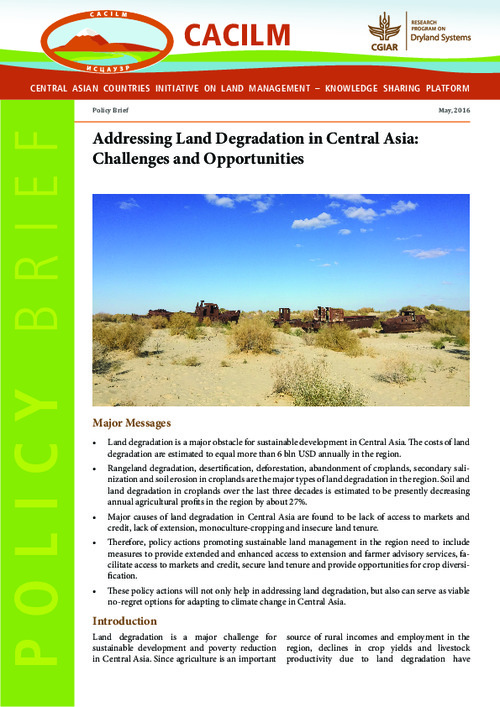Addressing Land Degradation in Central Asia: Challenges and Opportunities
Abstract
Land degradation is a major challenge for
sustainable development and poverty reduction
in Central Asia. Since agriculture is an important
source of rural incomes and employment in the
region, declines in crop yields and livestock
productivity due to land degradation have substantial negative impacts on the livelihoods of rural
agricultural households. For the same reason, land
degradation may also have considerable indirect economywide impacts through labor and food markets. Moreover,
despite a decade of strong economic growth, the problems
of poverty and malnutrition are persisting in many parts
of the region, especially in the rural areas. The rural poor
households in Central Asia have a high dependence on
agriculture for their incomes, thus, land degradation could
also have undesirable distributional effects, hindering
the ongoing efforts to reduce poverty and eradicate
malnutrition. The national governments, research and civil
society organizations are well aware of this challenge and
are making significant efforts to address land degradation.
However, in spite of these efforts, the extent of land
degradation and its severity are continuing to increase
across the region. Quite often, actions to combat land
degradation in Central Asia focus on individual agronomic
and infrastructural elements, while the effectiveness of
sustainable land management (SLM) interventions could
be enhanced by a combined implementation of agronomic,
socio-economic, institutional and policy measures through
mutually consistent SLM packages. Needless to say, these
SLM interventions need to be guided by evidence-based
solid science in their formulation

